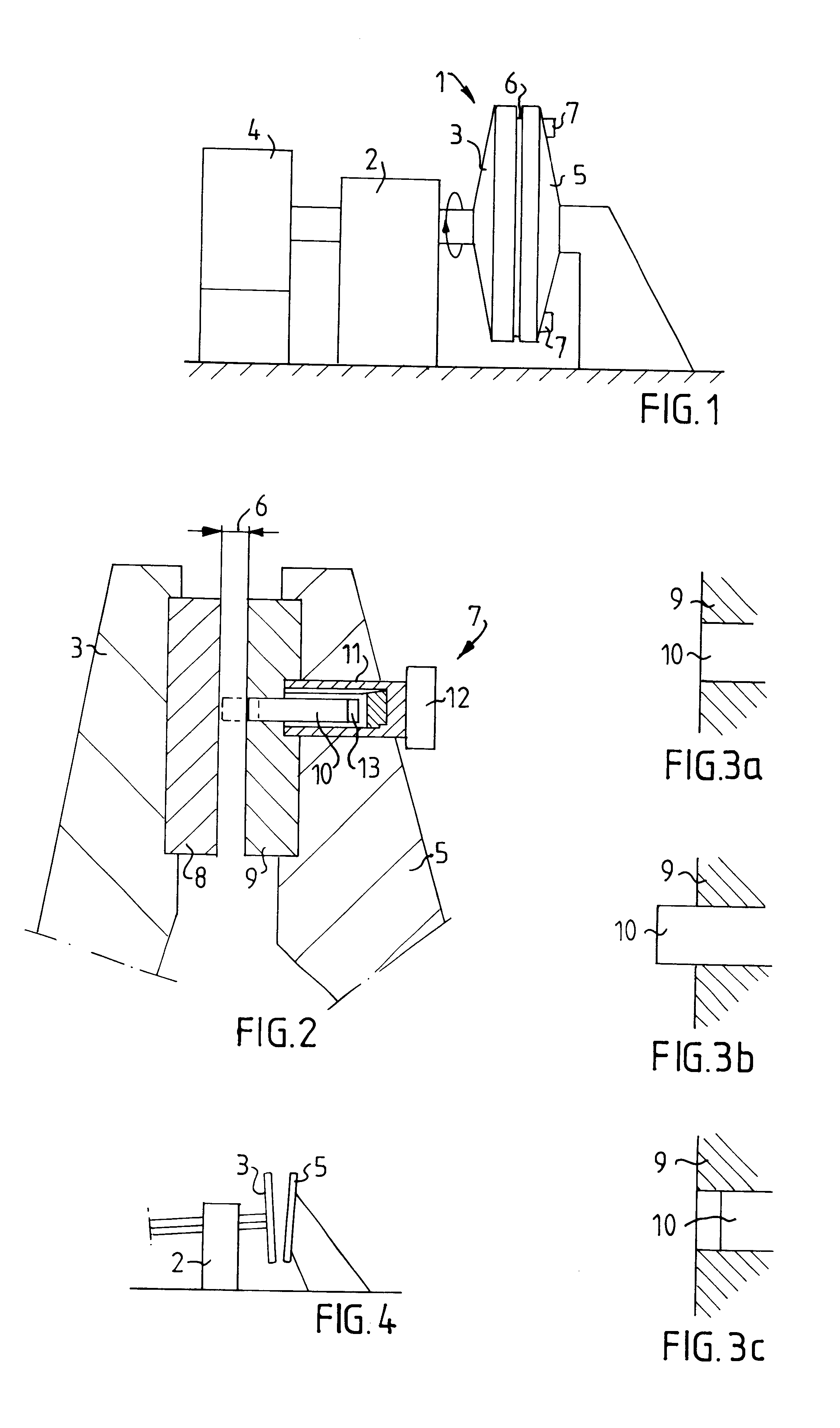Method and device for measuring a distance between a stator and a rotor
a technology of stator and rotor, which is applied in the field of measuring a distance can solve the problems of continuous wear of the sensor during operation, large wear of the sensor during zeroing, and the change in the size of the refining gap between a stator and a rotor during operation, so as to achieve a more reliable and convenient distance determination
- Summary
- Abstract
- Description
- Claims
- Application Information
AI Technical Summary
Benefits of technology
Problems solved by technology
Method used
Image
Examples
Embodiment Construction
FIG. 1 shows diagrammatically those parts of a machine 1 of the refiner type intended for paper pulp production which are necessary to understand the invention. This machine is provided with a rotor 3 which is mounted rotatably in a stand 2, is driven by a motor 4 and can also be moved axially in the direction towards and away from a stator 5 in order to regulate the size of a refining gap 6 between the rotor 3 and the stator 5. For checking the size of the refining gap 6, at least one sensor arrangement 7, with a sensor of magnetic type which suitably works according to the reluctance principle, is mounted in the stator 5. This type of sensor is well known to the expert in the field. Two or more sensor arrangements 7 can suitably be distributed around the stator 5.
As shown in greater detail in FIG. 2, both the rotor 3 and the stator 5 are provided with refining segments 8, 9 which have a surface suitable for refining paper pulp and are mounted in a suitable number in a ring on the ...
PUM
| Property | Measurement | Unit |
|---|---|---|
| diameter | aaaaa | aaaaa |
| distance | aaaaa | aaaaa |
| size | aaaaa | aaaaa |
Abstract
Description
Claims
Application Information
 Login to View More
Login to View More - R&D
- Intellectual Property
- Life Sciences
- Materials
- Tech Scout
- Unparalleled Data Quality
- Higher Quality Content
- 60% Fewer Hallucinations
Browse by: Latest US Patents, China's latest patents, Technical Efficacy Thesaurus, Application Domain, Technology Topic, Popular Technical Reports.
© 2025 PatSnap. All rights reserved.Legal|Privacy policy|Modern Slavery Act Transparency Statement|Sitemap|About US| Contact US: help@patsnap.com


